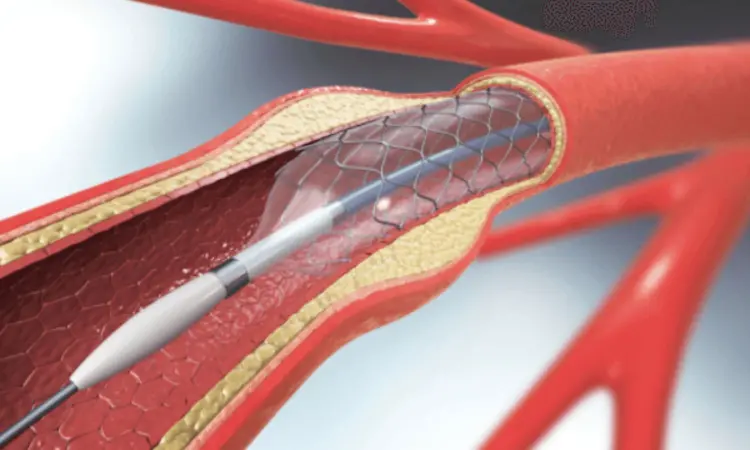- Home
- Medical news & Guidelines
- Anesthesiology
- Cardiology and CTVS
- Critical Care
- Dentistry
- Dermatology
- Diabetes and Endocrinology
- ENT
- Gastroenterology
- Medicine
- Nephrology
- Neurology
- Obstretics-Gynaecology
- Oncology
- Ophthalmology
- Orthopaedics
- Pediatrics-Neonatology
- Psychiatry
- Pulmonology
- Radiology
- Surgery
- Urology
- Laboratory Medicine
- Diet
- Nursing
- Paramedical
- Physiotherapy
- Health news
- Fact Check
- Bone Health Fact Check
- Brain Health Fact Check
- Cancer Related Fact Check
- Child Care Fact Check
- Dental and oral health fact check
- Diabetes and metabolic health fact check
- Diet and Nutrition Fact Check
- Eye and ENT Care Fact Check
- Fitness fact check
- Gut health fact check
- Heart health fact check
- Kidney health fact check
- Medical education fact check
- Men's health fact check
- Respiratory fact check
- Skin and hair care fact check
- Vaccine and Immunization fact check
- Women's health fact check
- AYUSH
- State News
- Andaman and Nicobar Islands
- Andhra Pradesh
- Arunachal Pradesh
- Assam
- Bihar
- Chandigarh
- Chattisgarh
- Dadra and Nagar Haveli
- Daman and Diu
- Delhi
- Goa
- Gujarat
- Haryana
- Himachal Pradesh
- Jammu & Kashmir
- Jharkhand
- Karnataka
- Kerala
- Ladakh
- Lakshadweep
- Madhya Pradesh
- Maharashtra
- Manipur
- Meghalaya
- Mizoram
- Nagaland
- Odisha
- Puducherry
- Punjab
- Rajasthan
- Sikkim
- Tamil Nadu
- Telangana
- Tripura
- Uttar Pradesh
- Uttrakhand
- West Bengal
- Medical Education
- Industry
In-stent neoatherosclerosis frequent after endovascular therapy in lower limb arteries

Germany: In-stent neoatherosclerosis (NA) is frequently seen after endovascular therapy in lower limb arteries through OCT imaging; this increased both in extent and frequency the longer the duration since implantation, a recent study published in EuroIntervention has shown.
"Our findings suggest an active atherosclerotic process that may require tailored mitigation strategies," Arne Müller and colleagues from the Technical University of Munich in Munich, Germany, wrote in their study.
In-stent de novo atherosclerosis (or neo-atherosclerosis) is histologically characterized by an accumulation of lipid-laden foamy macrophages with or without a necrotic core and calcification within the nascent intima following stent implantation. It has attracted much attention due to its close relationship with late complications, such as late stent thrombosis and revascularization.
In-stent restenosis contributes to a rapid decline of vessel patency following stenting. Little is known about in-stent neoatherosclerosis' role in stent failure in lower limb arteries. Acknowledging this gap, the research team determined the patterns and prevalence of in-stent NA in patients with symptomatic ISR (in-stent restenosis) of the lower extremity vasculature using intravascular OCT (optical coherence tomography) imaging.
For this purpose, the patients underwent endovascular revascularisation for in-stent restenosis, including OCT imaging and angiography. In-stent neoatherosclerosis was defined as the presence of at least one fibroatheroma or fibrocalcific plaque within the neointima of a stented segment.
The researchers reported the following findings:
- Using OCT, the research team imaged 24 symptomatic patients with lower extremity artery disease (LEAD), with 30 ISR in the lower limbs, before their scheduled endovascular interventions.
- The formation of in-stent neoatherosclerosis was observed in 76.7% of lesions, while all stents with an implant duration > five years (n=8) showed signs of NA.
- The time from stent implantation to OCT was remarkably increased in lesions with NA.
- Lesions without neoatherosclerosis had a remarkably shorter duration from index procedure to OCT compared to those with ≥50 percent (n=9) or <50 percent (n=14) of frames exhibiting signs of NA.
- NA was predominantly characterized by fibroatheroma with thick fibrous caps with or without calcification.
"After endovascular therapy in lower limb arteries, in-stent neoatherosclerosis is frequently identified by OCT imaging; this increases both in extent and frequency the longer the duration since implantation," the researchers conclude. "Our results indicate an active atherosclerotic process that may require tailored mitigation strategies."
Reference:
The study "Prevalence and patterns of in-stent neoatherosclerosis in lower extremity artery disease" appeared in the EuroIntervention, the official Journal of EuroPCR and the European Association of Percutaneous Coronary Interventions (EAPCI). DOI: 10.4244/EIJ-D-22-00615
Dr Kamal Kant Kohli-MBBS, DTCD- a chest specialist with more than 30 years of practice and a flair for writing clinical articles, Dr Kamal Kant Kohli joined Medical Dialogues as a Chief Editor of Medical News. Besides writing articles, as an editor, he proofreads and verifies all the medical content published on Medical Dialogues including those coming from journals, studies,medical conferences,guidelines etc. Email: drkohli@medicaldialogues.in. Contact no. 011-43720751


